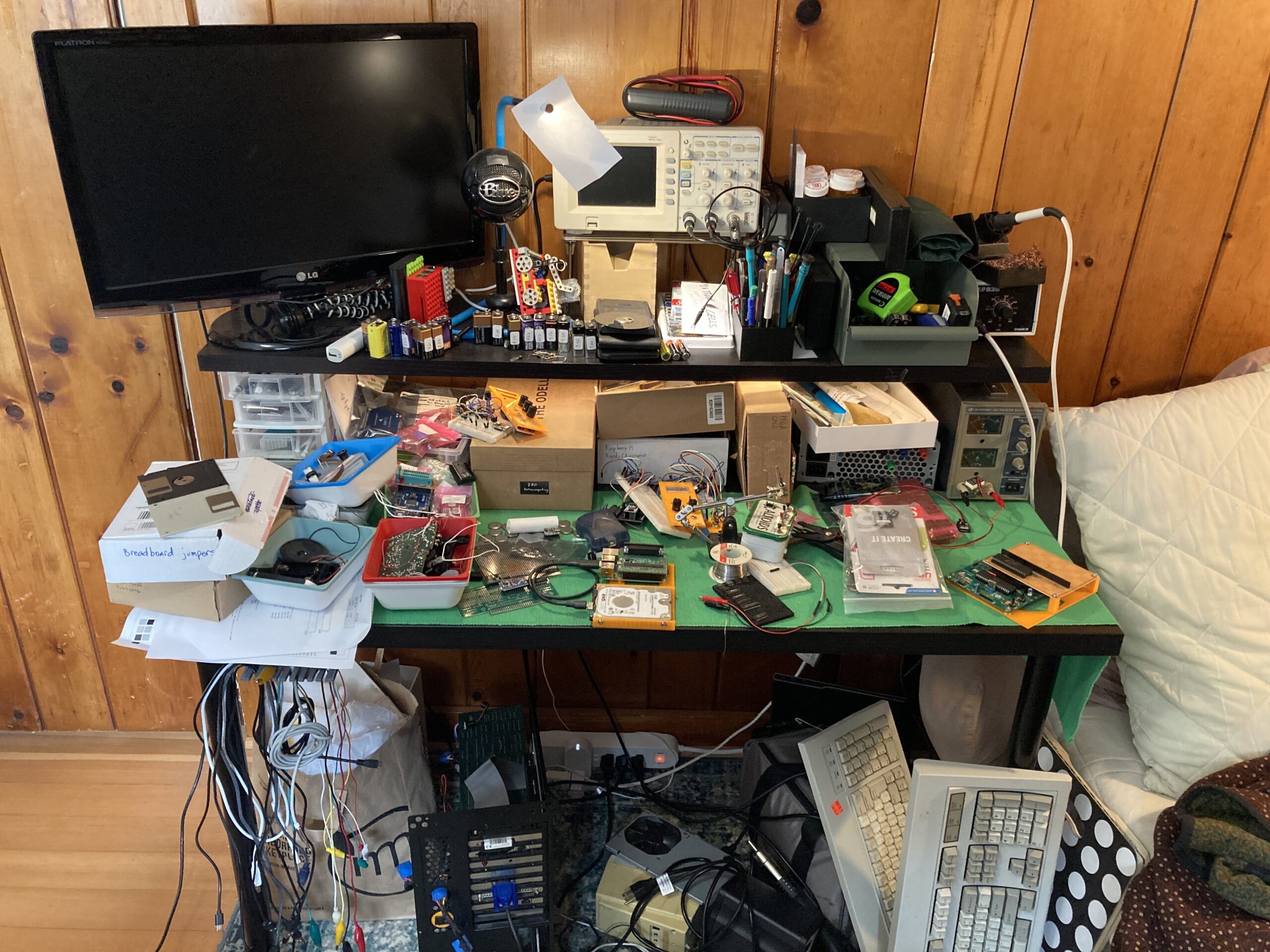I recently read Show Your Work by Austin Kleon. It is a short read and I recommend grabbing an electronic copy from your local library and reading it over your lunch hour. Ryan sent it my way and that has been helpful
Kleon provides some practical advice, some of it perhaps a little conflicting, but overall it’s solid. I wrote up some notes and drafted a short review/musing that I’ll post later.
“So what?” as he says.
Well this post is coming from the WordPress app on my phone as a test of an easy way to get my process documented. To fully simulate what I will be posting more of, here is a picture of my workbench.

Starting from the bottom right and going counter clockwise:
- A Sun keyboard I got for cheap at the recyclers. Unknown if it works
- IBM Model M that auto switches to XT keyboard protocol
- Z80 single board computer that I added a second board to… so I guess it’s a TBC not an SBC
- My eBay power supply next to a power supply I built from parts
- soldering iron, tools, a little tool holder I designed and 3D printed, oscilloscope
- LCD monitor for experiments
- A bunch of project trays. I’ll have to talk about these at some point but the short description is that a project that isn’t finished goes into a tray so the parts don’t get scattered but also doesn’t get hidden and forgotten
- My KayPro XT compatible retro computing project.
- My new hot air rework station amongst a pile of junk and parts
- And finally in the center are my “current” projects: RaSCSI drive emulator and some prototype modular synth modules
In an effort to follow his advice in story telling – This photo tells a story with a three part structure. The tool holder is a completed project and represents the beginning of my ability to design and print useful objects. The RaSCSI and synth modules are what I have completed so far. Their promise cannot be fulfilled until I add their final prototyped features and send them out into the world as complete ideas. The KayPro XT is the future. It is a fully functioning computer with a case and upgraded features. It will become a virtual museum piece, accessible by KVM over the Internet – the first of a handful of machines I want to add to my virtual museum.
So I will be writing more posts from now on. I’ll be integrating this site with my personal site. I’ll be adding links to references and other works. Thank you for reading and feel free to contact me if you’d like to work on something together!